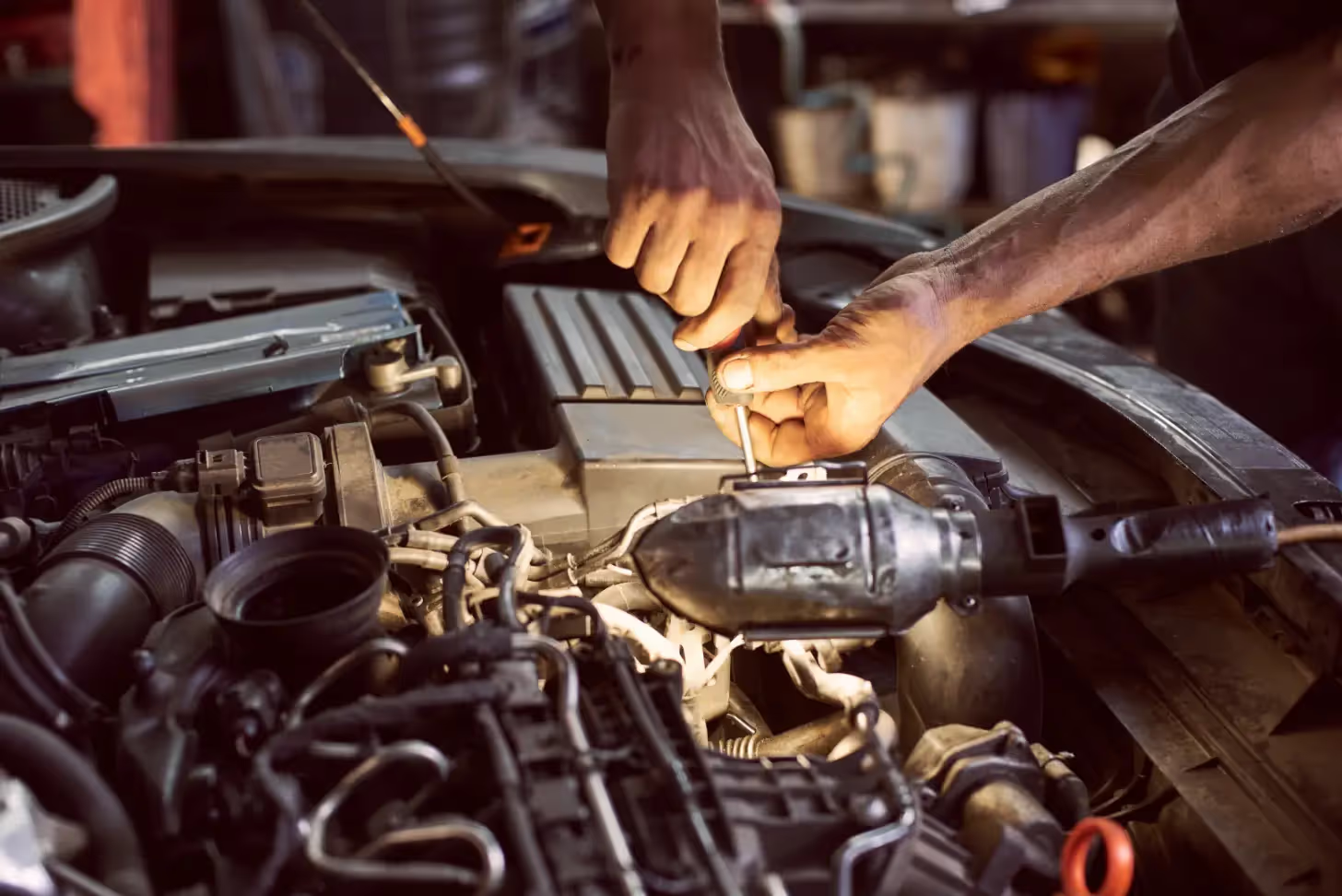What Different Color Smoke From Your Engine Means

When your diesel engine starts puffing out colored smoke, this is a warning you can’t afford to ignore. The color of that smoke is a good indicator of what is wrong.. Whether it's black, blue, or white, each hue signals a different type of engine issue that needs attention fast.
Let's break down what these smoke colors mean for your heavy-duty diesel engine and how to respond before minor problems turn into major downtime.
Black Smoke: Fuel Overload
That thick, dark black smoke billowing out of your truck is a clear sign your engine is running too rich. In other words, it’s burning too much fuel and not enough air. Here’s what could be causing it:
Clogged air filter: If your filter’s choked with dirt, airflow drops, and fuel doesn’t burn properly.
Faulty fuel injectors: The combustion balance gets thrown off when injectors stick open or spray too much fuel.
Bad turbocharger: A failing or lagging turbo can’t supply enough compressed air, causing unburned fuel to exit as smoke.
ECM tuning issues: Overly aggressive performance tunes can dump excess fuel in pursuit of power, at the cost of emissions and engine health.
What to do: Start with your air intake and fuel system. Check the air filter, inspect the injectors, and test the turbo. Scan the ECM for calibration problems or outdated tunes if everything checks out.
Blue Smoke: Oil’s Burning
Blue smoke coming from under the hood means your engine is burning oil. This usually points to worn internal components or oil seeping where it shouldn't.
Common culprits include:
Worn piston rings or cylinder walls: These allow oil to slip into the combustion chamber.
Damaged valve seals or guides: These components keep oil where it belongs — if they fail, expect smoke.
Turbocharger seal failure: A compromised seal here allows oil to enter the intake or exhaust sides of the turbo.
Overfilled crankcase: Even too much oil can cause blow-by and smoking.
What to do: Perform a compression test or leak-down test to assess ring and cylinder health. Check the valve seals and inspect the turbo for oil residue. If your oil level is too high, drain it down to spec.
White Smoke: Fuel’s Not Burning
White smoke might look less threatening, but it’s just as serious. Typically, it means unburned diesel fuel is making its way out of the exhaust, usually tied to cold combustion or poor fuel atomization.
Key triggers include:
Cold engine starts: Fuel won't ignite cleanly if your glow plugs or intake heaters aren’t working.
Injector issues: Clogged, stuck, or cracked injectors can spray poorly atomized fuel.
Low compression: Worn pistons or valves can lower combustion temperature, leading to incomplete ignition.
Coolant leakage: If sweet-smelling white smoke persists after warm-up, steam from coolant may enter the combustion chamber, which is a sign of a blown head gasket or cracked head/block.
What to do: Begin with your glow plugs and fuel injectors. If the smoke lingers after the engine warms, pressure test your cooling system and inspect for coolant loss or a risk of hydro lock.
Gray Smoke: Mixed Bag
You don’t hear as much about gray smoke, but it’s still worth noting. This color usually indicates burned transmission fluid (in automatic units with vacuum modulators), turbo problems, or excessive idling.
What to do: If your truck’s been idling too long, take it for a hard run to clear the soot. Otherwise, inspect the turbo and transmission vacuum system.
Colored Smoke and Modern After-Treatment Systems
Some smoke issues might be masked or delayed due to modern after-treatment systems like DPFs (Diesel Particulate Filters) and SCR systems. A clogged DPF can prevent visible smoke but still harm engine efficiency. Conversely, failed EGR valves, DEF systems, or NOx sensors may trigger faults before you see smoke.
So, if you're counting on visual cues alone, you're already behind. The best bet? Pair visual smoke diagnostics with ECM scans and preventive maintenance to catch issues early.
When to Worry (and When to Pull Over)
Here’s a quick rule of thumb:
- Black smoke for a few seconds under load? Probably normal.
- Blue or white smoke that persists after warm-up? That’s a shop visit waiting to happen.
- Heavy smoke with loss of power, rough idle, or engine knocking? Time to shut it down and call for help from professional diesel engine experts.
Final Thoughts
Colored smoke isn’t just a cosmetic issue — it’s a window into your diesel engine’s health. Whether it's too much fuel, burning oil, or unburned fuel, that puff of color can point you straight to the problem. Don’t ignore it. Stay ahead of breakdowns and downtime by paying close attention to what your exhaust is telling you!
